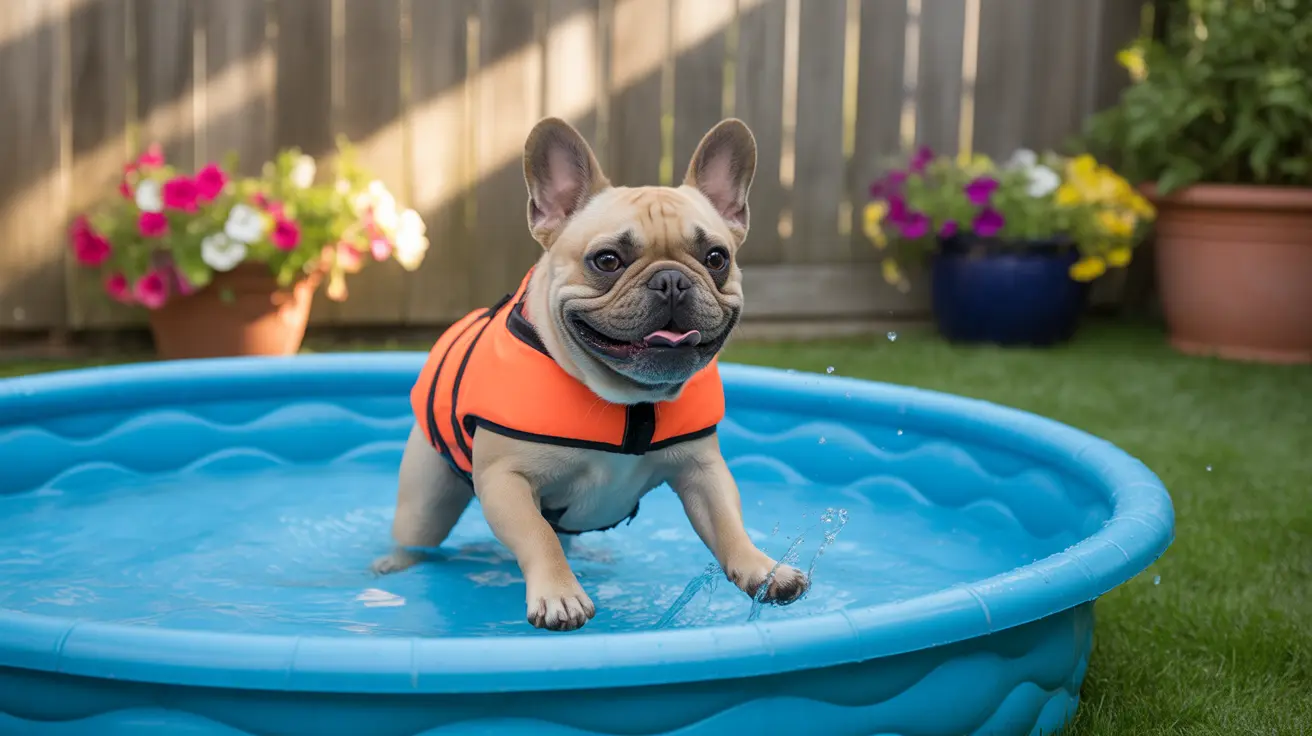Physical Characteristics and Swimming Ability
Boston Terriers have several physical traits that affect their swimming ability:
- Short, brachycephalic face that can make breathing while swimming challenging
- Compact, muscular body that may tire quickly in water
- Absence of webbed feet, unlike natural swimming breeds
- Short coat that offers minimal insulation in water
These characteristics don't prevent Boston Terriers from swimming, but they do require special consideration and safety measures.
Safety Considerations for Swimming Boston Terriers
Essential Safety Equipment
When introducing your Boston Terrier to water activities, always use:
- A properly fitted dog life jacket
- A secure collar with identification
- A designated water entry and exit point
- Close supervision at all times
Health Precautions
Due to their brachycephalic nature, Boston Terriers need extra attention during water activities:
- Monitor breathing patterns closely
- Limit swimming duration to prevent exhaustion
- Schedule water activities during cooler parts of the day
- Ensure fresh drinking water is always available
Introducing Your Boston Terrier to Water
Starting Slowly
The key to success is gradual introduction:
- Begin in very shallow water
- Use positive reinforcement with treats and praise
- Keep initial sessions brief (5-10 minutes)
- Allow your dog to set the pace
Building Confidence
Help your Boston Terrier develop comfort around water through:
- Supervised play with shallow water features
- Gradual progression to deeper water
- Positive associations with water activities
- Regular, consistent exposure
Alternative Water Activities
If your Boston Terrier isn't keen on swimming, consider these alternatives:
- Kiddie pool splashing
- Sprinkler play
- Shallow wade pools
- Water toys in minimal depth
Frequently Asked Questions
Do Boston Terriers naturally like to swim, or does it depend on their individual personality?
Boston Terriers' interest in swimming largely depends on individual personality and early exposure to water. While some naturally enjoy water activities, others may be more hesitant. Early positive experiences and proper introduction significantly influence their attitude toward swimming.
How can I safely introduce my Boston Terrier to swimming and water activities?
Start with shallow water where your dog can touch the bottom. Use positive reinforcement, treats, and favorite toys to create pleasant associations. Progress gradually, never force your dog, and always supervise water activities closely.
What are the risks of swimming for Boston Terriers with brachycephalic features?
Their short-nosed structure can make breathing difficult during exercise, especially in water. Risks include respiratory distress, fatigue, and potential water inhalation. Always monitor breathing and provide frequent rest periods.
Should I use a life jacket for my Boston Terrier when swimming, and why?
Yes, a life jacket is strongly recommended for Boston Terriers during water activities. It provides buoyancy support, helps conserve energy, and offers an extra safety measure, particularly important given their physical characteristics.
What are good alternative water games if my Boston Terrier doesn't enjoy swimming?
Alternative water activities include playing with sprinklers, splashing in shallow kiddie pools, interactive water toys, and supervised wading. These options provide cooling benefits and entertainment without the risks of deep-water swimming.
Conclusion
While Boston Terriers can learn to enjoy water activities, their safety and comfort should always be the priority. With proper precautions, patience, and positive reinforcement, many Boston Terriers can safely participate in water activities, whether that means swimming or simply enjoying shallow water play.
Remember that each dog is unique, and it's essential to respect your Boston Terrier's individual preferences while ensuring their safety around water.






